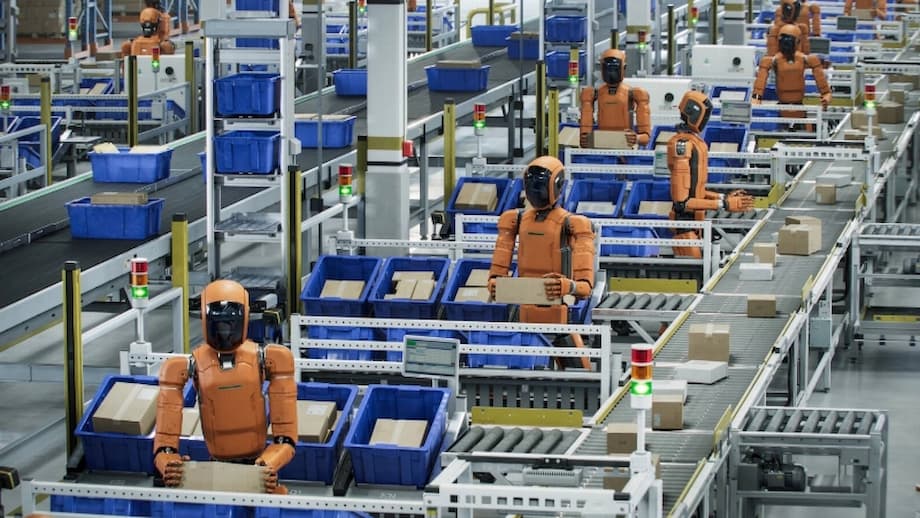China’s Quiet Revolution: Exporting a New Production Model
For decades, the world has watched China’s rise as the “factory of the world,” churning out everything from toys to smartphones at a scale and speed unmatched by any other nation. But as global leaders and economists debate the impact of Chinese exports on trade balances and jobs, a more profound transformation is underway—one that is less about what China exports, and more about how it produces. This new export is not a product, but a model: a system of relentless productivity, powered by artificial intelligence (AI), automation, and state-guided industrial optimization. The implications are disruptive, deflationary, and still largely misunderstood outside China’s borders.
- China’s Quiet Revolution: Exporting a New Production Model
- From Labor and Scale to Intelligence and Automation
- Case Studies: Ultra-Fast Fashion, Smart Vehicles, and Beyond
- How China’s Model Differs: State Guidance, Entrepreneurial Agility, and Societal Readiness
- Global Reactions: Competition, Containment, and Policy Dilemmas
- Challenges and Criticisms: Sustainability, Labor, and Geopolitics
- What’s Next: The Future of China’s Production Model Export
- In Summary
As U.S. Treasury Secretary Scott Bessent recently warned, “The Chinese cannot be allowed to export their way back to prosperity,” reflecting growing fears in Washington about overcapacity, subsidies, and dumping. Yet, the real challenge may be that China is exporting a new paradigm for manufacturing—one that could reshape global cost structures, competitive dynamics, and even the future of work itself.
From Labor and Scale to Intelligence and Automation
China’s initial ascent as a manufacturing powerhouse was fueled by cheap labor, vast scale, and an ability to rapidly mobilize resources. This model, however, is evolving. Today, China’s factories are increasingly defined by “intelligent infrastructure”—a tightly woven network of sensors, machines, and analytics orchestrated by AI. No longer limited to software or chatbots, AI is now embedded across the physical economy, guiding everything from robotic arms and warehouse fleets to fully autonomous production lines.
Take, for example, Xiaomi’s “lights-out” factory in Beijing, which can assemble 10 million smartphones annually with minimal human intervention. Here, AI conducts a symphony of machines, optimizing every step of production, reducing waste, and driving efficiencies that traditional manufacturers can only approach incrementally. This is not an isolated case: as of early 2025, China boasts over 30,000 smart factories, with more than 1,200 classified as advanced-level and 230 as “excellence-level” facilities. These numbers dwarf similar efforts in most other countries.
What sets China apart is not just the adoption of new technologies, but the systemic integration of AI, robotics, and digital platforms into every layer of its industrial base. This approach, sometimes referred to as “Made in China 2.0,” is less about copying Western models and more about creating a uniquely Chinese fusion of state vision, entrepreneurial agility, and technical fluency.
AI as Industrial Infrastructure
In China, AI is increasingly seen as a form of infrastructure—an enabling layer that underpins industrial transformation. It optimizes energy use, predicts maintenance needs, fine-tunes production, and enables rapid customization. The concept of “AI+” emphasizes AI’s role across industries, democratizing innovation and spreading capability beyond major cities and large firms. Open-source AI models, such as those developed by DeepSeek, are accelerating this diffusion, making advanced AI tools accessible to a broader range of manufacturers and entrepreneurs.
This integration tightens the feedback loop between software and hardware, enabling what experts call “short-cycle innovation”—the ability to iterate rapidly, learn from real-world data, and deploy improvements at scale. The result is a manufacturing ecosystem that is not only more efficient, but also more resilient and adaptable to changing market demands.
Case Studies: Ultra-Fast Fashion, Smart Vehicles, and Beyond
The export of China’s production model is perhaps most visible in sectors like ultra-fast fashion and electric vehicles (EVs), where speed, flexibility, and digital integration are paramount.
Ultra-Fast Fashion: The Shein Effect
China’s dominance in ultra-fast fashion is a case in point. Brands like Shein and Temu have revolutionized the industry by leveraging AI-driven trend forecasting, just-in-time production, and cross-border e-commerce. Unlike traditional fast fashion, which operates on seasonal cycles, ultra-fast fashion companies release thousands of new styles weekly, responding instantly to shifting consumer preferences. This agility is made possible by China’s advanced manufacturing networks, digital commerce infrastructure, and deep integration of technology in supply chain operations.
Shein’s meteoric rise—from $2.5 billion in online revenues in 2019 to $48 billion in 2024—demonstrates how the “China model” can outpace Western competitors on both speed and price. The so-called “Shein Effect” is now being studied and emulated by retailers worldwide, raising questions about sustainability, labor practices, and regulatory compliance.
Smart Vehicles: AI-Driven Supply Chains
The automotive sector is undergoing a similar transformation. China’s new energy vehicle (NEV) market now accounts for over half of all passenger vehicle sales, with projections that electric vehicles will surpass internal combustion engines entirely by 2025. Chinese automakers like BYD and Xiaomi are using AI to reduce development cycles, cut costs, and enable faster market entry. The competitive edge lies in software-driven ecosystems that create recurring revenue through subscriptions, data monetization, and platform integrations.
China’s dominance extends up the supply chain as well, controlling 75% of global lithium-ion battery production and 70% of cathode capacity. Innovations such as CATL’s battery-swap stations and sodium-ion battery technology are making EVs more accessible, while government incentives and policy support further strengthen China’s position.
How China’s Model Differs: State Guidance, Entrepreneurial Agility, and Societal Readiness
What makes China’s production model so difficult to replicate is the unique blend of state guidance, entrepreneurial dynamism, and societal readiness for rapid technological change. Unlike Western economies, where the private sector often leads innovation and the state plays a more hands-off role, China’s approach is characterized by close coordination between government and business.
Policies such as “Made in China 2025,” “dual circulation,” and the 14th Five-Year Plan for Ecological and Environmental Protection set broad strategic goals, while local governments and state enterprises compete to meet key performance indicators. This creates a decentralized, innovation-driven environment where advances in one sector (such as batteries) quickly benefit others (like EVs and electronics). Engineers move fluidly between design and production, and close supplier-manufacturer collaboration enables fast iteration and learning.
AI Self-Reliance and the Global Tech Race
China’s drive for AI self-reliance is both a response to and a catalyst for its production model export. Facing U.S.-led export controls on advanced chips and manufacturing equipment, Beijing has prioritized developing an independent AI ecosystem. Domestic companies like Huawei and Baidu are building their own AI chips and software frameworks, while startups such as DeepSeek are pushing the boundaries of efficient, scalable AI model development.
DeepSeek’s release of its R1 large language model (LLM) in early 2025, trained with dramatically fewer resources than Western competitors, signaled a new phase in the global AI arms race. By achieving near-parity with models like OpenAI’s GPT-4 at a fraction of the cost, DeepSeek demonstrated that high performance can be decoupled from sheer scale and computational intensity. This has triggered a rethinking of AI infrastructure, making advanced AI more accessible and pushing adoption into enterprise, edge, and public sector platforms.
Global Reactions: Competition, Containment, and Policy Dilemmas
The export of China’s production model is not without controversy. In Washington and other Western capitals, concerns are mounting that China’s relentless productivity improvements, state subsidies, and overcapacity are distorting global trade and undermining domestic industries. U.S. policy has shifted from confidence to self-doubt, with efforts to control global AI diffusion challenged by China’s rapid innovation and open-source approach.
Export controls on AI chips and manufacturing equipment, introduced in 2022 and strengthened in subsequent years, have sought to limit China’s access to advanced technologies. While these measures have created obstacles for Chinese firms, they have also spurred domestic innovation and accelerated efforts toward self-sufficiency. Companies like SMIC, Huawei, and others are advancing chip design and manufacturing, even as they face ongoing challenges in performance and global market access.
At the same time, the open-source release of Chinese AI models like DeepSeek raises questions about cross-border model transfer, data sovereignty, and ethical governance. U.S. policymakers worry that such openness could allow adversaries to exploit AI for surveillance and cyber warfare, while critics argue that overly strict controls risk harming American semiconductor firms and stifling innovation.
Reshaping the Global Industrial Landscape
China’s export of its production model is already reshaping the global industrial landscape. East Asia, led by China and South Korea, is pulling ahead in AI manufacturing adoption, challenging Western and Global South efforts to reshore manufacturing. The region’s mission-oriented strategies, strong state-business coordination, and societal support for rapid technological change stand in contrast to the more cautious, privacy-focused approaches in the West.
As digitalization and AI adoption lag in other regions, China’s advancements are likely to set new standards for manufacturing excellence, sustainability, and software-defined production. The divide between technology and industry is dissolving, with AI and robotics shaping every aspect of manufacturing—from design and prototyping to logistics and after-sales service.
Challenges and Criticisms: Sustainability, Labor, and Geopolitics
Despite its successes, China’s production model faces significant challenges. The ultra-fast fashion sector, for example, has come under scrutiny for its environmental impact, with China generating approximately 22 million tonnes of textile waste in 2020 and a recycling rate of only 20 percent. The government is promoting sustainability through policies such as the Circular Economy Promotion Law and extended producer responsibility, but balancing profitability with environmental responsibility remains a work in progress.
Labor practices are another area of concern, with companies like Shein facing criticism over supply chain practices and working conditions. Regulatory scrutiny is increasing, both domestically and internationally, as policymakers seek to ensure fair competition and protect workers’ rights.
Geopolitically, the U.S.-China tech war continues to intensify, with both sides imposing export controls, trade penalties, and restrictions on critical minerals. The race for AI supremacy is as much about national security and economic dominance as it is about technological innovation. As the global AI landscape evolves, international collaboration on governance, standards, and ethical frameworks will be essential to ensure that AI serves the interests of all societies.
What’s Next: The Future of China’s Production Model Export
Looking ahead, China’s manufacturing model is expected to become even more integrated, modular, and digitally orchestrated. Industrial clusters may evolve into computational zones where physical and digital production are inseparable. The next phase—sometimes called “Made in China 2035”—will likely emphasize design excellence, sustainability, and the fusion of software with hardware at every level.
For businesses, investors, and policymakers worldwide, understanding China’s new export is no longer optional. Whether in fashion, electronics, vehicles, or beyond, the “China model” is setting new benchmarks for speed, efficiency, and adaptability. The challenge for other nations is not just to compete on price or scale, but to rethink their own approaches to innovation, industrial policy, and the future of work.
In Summary
- China is exporting a new production model powered by AI, automation, and state-guided industrial optimization, not just physical goods.
- This model is transforming industries such as ultra-fast fashion and electric vehicles, setting new standards for speed, efficiency, and digital integration.
- China’s approach blends state guidance, entrepreneurial agility, and societal readiness, making it difficult to replicate elsewhere.
- U.S.-led export controls have spurred domestic innovation in China, accelerating efforts toward AI self-reliance and efficient, scalable model development.
- Global reactions range from policy containment to emulation, as China’s advancements challenge Western and Global South efforts to reshore manufacturing.
- Challenges remain in sustainability, labor practices, and geopolitical competition, but China’s production model is likely to shape the future of global manufacturing.
- Understanding and adapting to this new paradigm is essential for businesses, investors, and policymakers navigating the evolving global economy.












